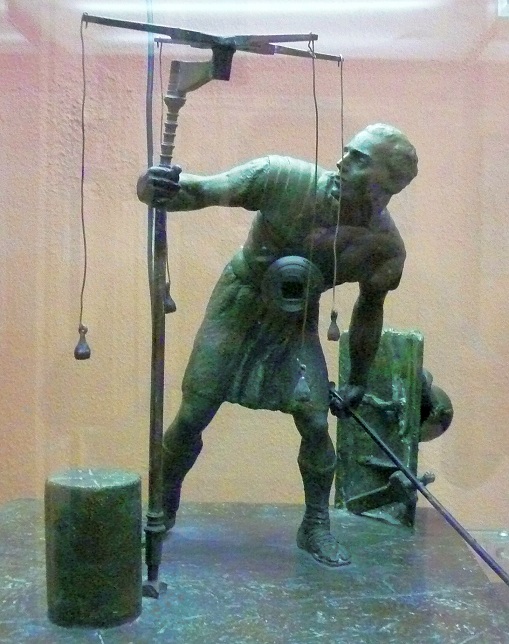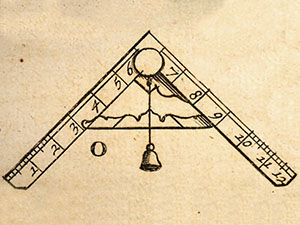Posted By: D L Bahler

Ad Triangulum (And maybe some Ad Quadratum too) - 08/10/10 09:13 PM
I spent a long time debating whether to create a new post or add this to the daisy wheel topic. I decided to make a new post, because this isn't really daisy wheel geometry although it is related, and that thread is quite long already.

First off, Here is a link to photographs of me going through a simple Ad Triangulum construction (or at least my own interpretation of this system) for a small building. I did this to explore the process, and took lots of pictures to document all the various steps.
At the end of the album are some pictures of a plan yielded by the use of a matrix system, also Ad Triangulum. This was created by using the points and lines of a simple geometric matrix consisting mostly of equilateral triangles. My primary rule for this construction was that only those lines may be drawn which will yield equilateral triangles.
After experimenting with this system, I have decided that the pure constructive method, without the creation of the matrix, is better (in my opinion) and both can yield essentially the same results. The straightforward construction is a lot faster, and by using it you make only those lines that you need for your plan, nothing more. The disadvantage is that you have to have a very clear picture in your mind of just what it is you want before you start, whereas the matrix system can essentially plan the structure for you. You also really have to know how to use the system if you are going to go with the straight construction method.
It should be noted that the steel rulers are used only as straightedges, and not as rulers.
I tried to explain everything as best as I could in the photo descriptions, so make sure and pay attention to those. Feel free to ask any other questions you may have. I did assume a basic understanding of geometry, the daisy wheel, and the use of dividers so if you don't have that I recommend acquiring it BEFORE viewing the pictures and asking questions. (please)
I also recommend reading up on Euclid, and familiarizing yourself with Euclid's first three postulates:
1 A straight line segment can be drawn joining any two points.
2 Any straight line segment can be extended indefinitely, to form a straight line.
3 Given any straight line segment, a circle can be drawn having the segment as radius and one endpoint as center.
These are the foundations of these geometric constructions, and this is often referred to as Euclidean Geometry because of this. Ad Triangulum is simply an application of these 3 postulates for the purpose of designing buildings or creating decorations (and possibly painting as well)
Welcome to the High and Liberal Art of Architectural Geometry
Ad Quadratum geometry to follow at a later date. I have to think of something appropriate to design with it. Which is hard because it was used to design Cathedrals, and great structures like the Hagia Sophia.

First off, Here is a link to photographs of me going through a simple Ad Triangulum construction (or at least my own interpretation of this system) for a small building. I did this to explore the process, and took lots of pictures to document all the various steps.
At the end of the album are some pictures of a plan yielded by the use of a matrix system, also Ad Triangulum. This was created by using the points and lines of a simple geometric matrix consisting mostly of equilateral triangles. My primary rule for this construction was that only those lines may be drawn which will yield equilateral triangles.
After experimenting with this system, I have decided that the pure constructive method, without the creation of the matrix, is better (in my opinion) and both can yield essentially the same results. The straightforward construction is a lot faster, and by using it you make only those lines that you need for your plan, nothing more. The disadvantage is that you have to have a very clear picture in your mind of just what it is you want before you start, whereas the matrix system can essentially plan the structure for you. You also really have to know how to use the system if you are going to go with the straight construction method.
It should be noted that the steel rulers are used only as straightedges, and not as rulers.
I tried to explain everything as best as I could in the photo descriptions, so make sure and pay attention to those. Feel free to ask any other questions you may have. I did assume a basic understanding of geometry, the daisy wheel, and the use of dividers so if you don't have that I recommend acquiring it BEFORE viewing the pictures and asking questions. (please)
I also recommend reading up on Euclid, and familiarizing yourself with Euclid's first three postulates:
1 A straight line segment can be drawn joining any two points.
2 Any straight line segment can be extended indefinitely, to form a straight line.
3 Given any straight line segment, a circle can be drawn having the segment as radius and one endpoint as center.
These are the foundations of these geometric constructions, and this is often referred to as Euclidean Geometry because of this. Ad Triangulum is simply an application of these 3 postulates for the purpose of designing buildings or creating decorations (and possibly painting as well)
Welcome to the High and Liberal Art of Architectural Geometry
Ad Quadratum geometry to follow at a later date. I have to think of something appropriate to design with it. Which is hard because it was used to design Cathedrals, and great structures like the Hagia Sophia.



 Some variations of the plumb level
Some variations of the plumb level what would appear to be a French variation of an ancient Roman leveling device.
what would appear to be a French variation of an ancient Roman leveling device.